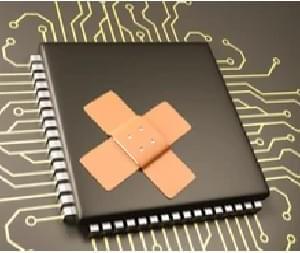The flaw would allow a network-based unauthenticated threat actor to perform DoS attacks.


Microsoft has shut down more than 1,400 malicious email accounts used by cybercriminals to collect stolen customer passwords via ransomware in the past year. The technology company has presented the second edition of ‘Cyber Signals’, a report that it produces periodically on cyber threats and that shows trends in security and cybercrime. In this issue, it offers insight into the evolution of extortion in cybercrime.
In this analysis, the company highlights that the specialization and consolidation of cybercrime have driven ransomware as a service (RaaS), which has become a dominant business model. RaaS programs, such as Conti or REvil, offer cybercriminals the opportunity to buy access to both ransomware payloads, leaked data and payment infrastructure.
These are used by different malicious actors, among which are the so-called access ‘brokers’, who sell the possibility of accessing the networks. In this way, those cybercriminals who do not have the necessary knowledge to execute the attacks can pay for these techniques and use them.
Twitter executives misled federal regulators and the company’s own board about “extreme and egregious shortcomings” in its defenses against hackers and its meager efforts to combat bots, said a former chief security officer Peiter Zatko.
What happens inside Twitter?
The document describes Twitter as a chaotic and aimless company beset by infighting, unable to adequately protect its 238 million daily users, which include government agencies, heads of state and other influential public figures.
Your partner’s scrolling through Instagram.
Suddenly they stop. And stay on a single photo.
After a while, you can’t help but wonder:
Who are they looking at?
Is it a friend? A family member?
Or is it an ex? Someone new? Someone they’ve never met?


Circa 2014 😗
Vultures’ faces and large intestines are covered with bacteria that is toxic to most other creatures, but these birds of prey have evolved a strong gut that helps them not get sick from feasting on rotting flesh, according to a new study.
In the first analysis of bacteria living on vultures, the study’s researchers found that these scavengers are laden with flesh-degrading Fusobacteria and poisonous Clostridia. As bacteria decompose a dead body, they excrete toxic chemicals that make the carcass a perilous meal for most animals. But vultures often wait for decay to set in, giving them easy access to dead animals with tough skins.

Circa 2019 face_with_colon_three
Scientists zapped mold spores in a laboratory and concluded that two types of fungus could survive a journey to the moon or Mars.
There are both positive and negative implications about this news, according to a recent statement by the American Geophysical Union (AGU). AGU coordinated the 2019 Astrobiology Science Conference in Seattle, where lead researcher microbiologist Marta Cortesão, a doctoral student at the German Aerospace Center (DLR), will present her research on the mold today (June 28).
Talking about some of the ideas and philosophy surrounding life extension technologies. Our own psychology and coping mechanisms that view death as a good thing. The same way we used to see some diseases as a part of a gods plan. As soon as we cured these diseases, somehow they were not a part of gods plan anymore. The same will happen with aging and death, and that is just a matter of time. Picking apart some of the ways of thinking that suggest a longer life would be a boring or bad thing. We live for all of the pleasant and amazing experiences that we can have in the world, what else could possibly matter more. The end and absence of meaning (death) does not give life meaning. It is life that gives life meaning.
In order to bridge the gap between AI researchers and medical professionals we developed a very accessible free prototype system which can be used by medical professionals to understand the reality of Deep Learning tools for chest X-ray diagnostics.
Google’s parent firm, Alphabet, has long been working on multipurpose robots.
The fleet of “Everyday Robots,” as they are colloquially called, has recently been upgraded with sophisticated AI language systems so that they can better comprehend human speech.
Unlike other robots, which can only understand clear directions like “bring me a drink of water,” the fleet can now understand and act on more subtle ones.